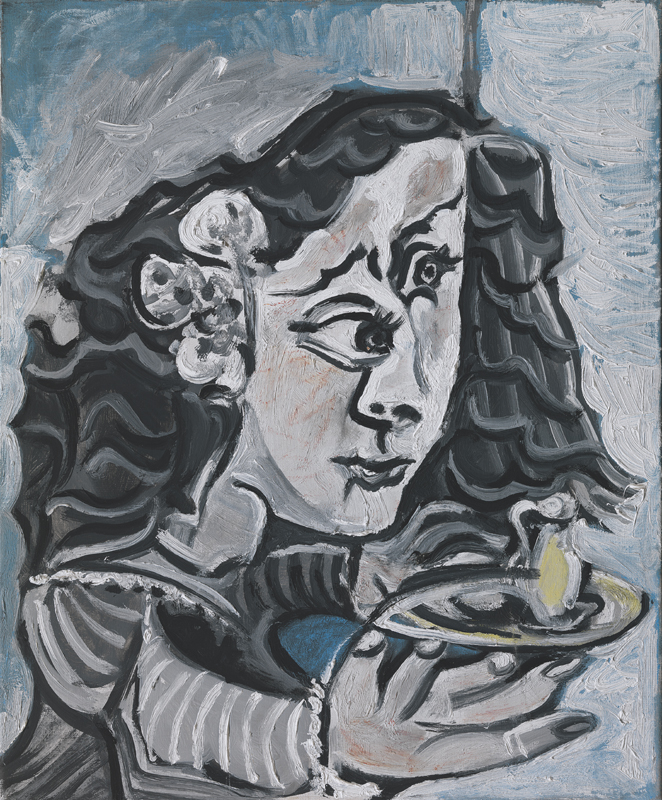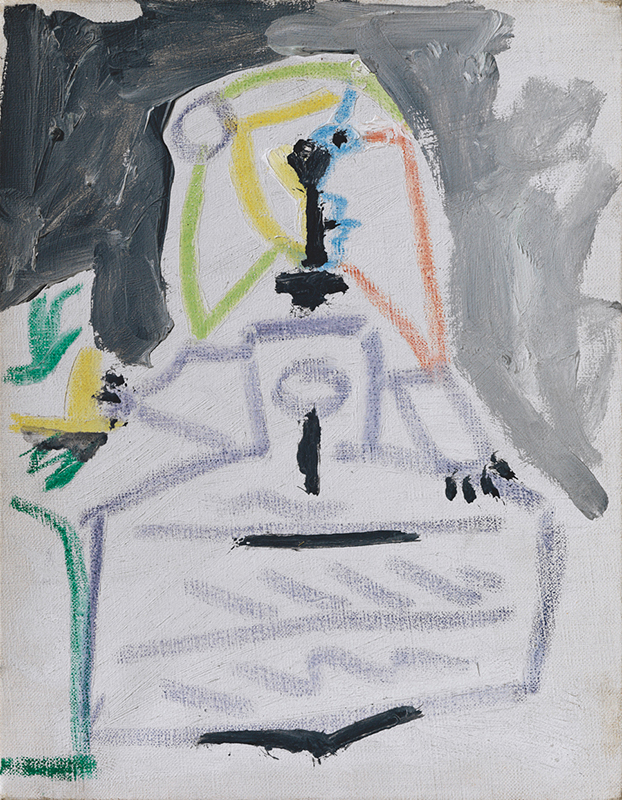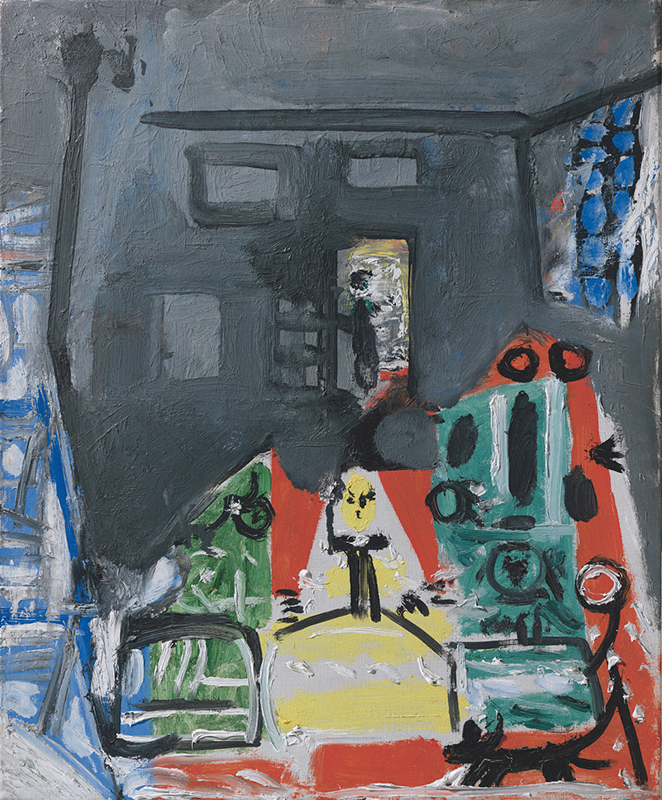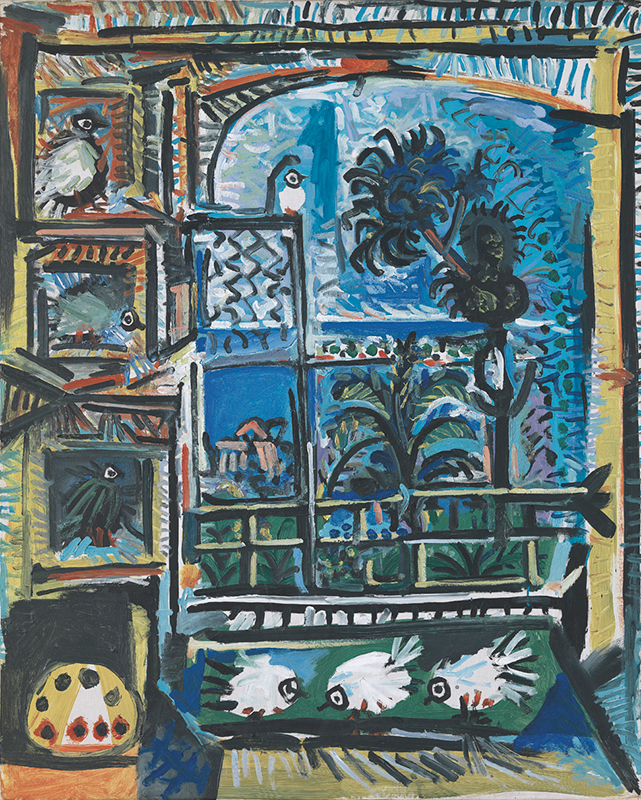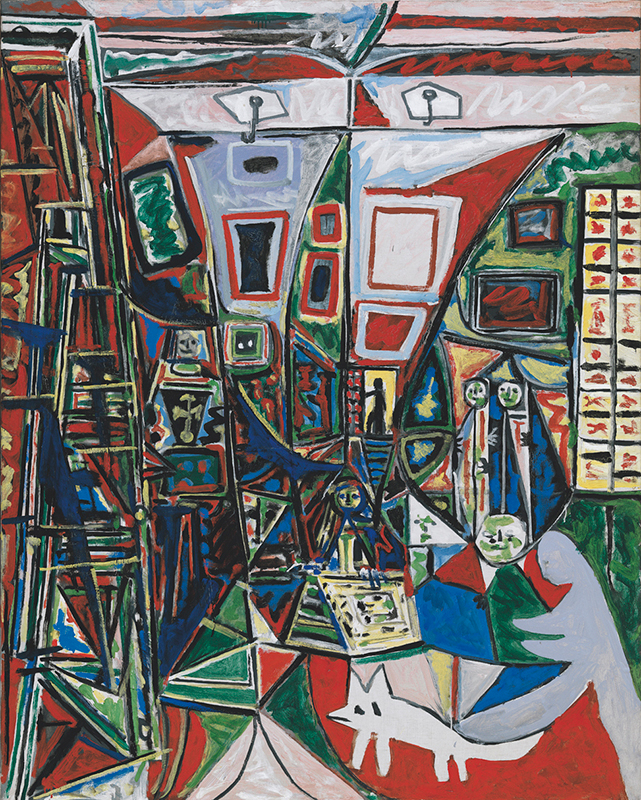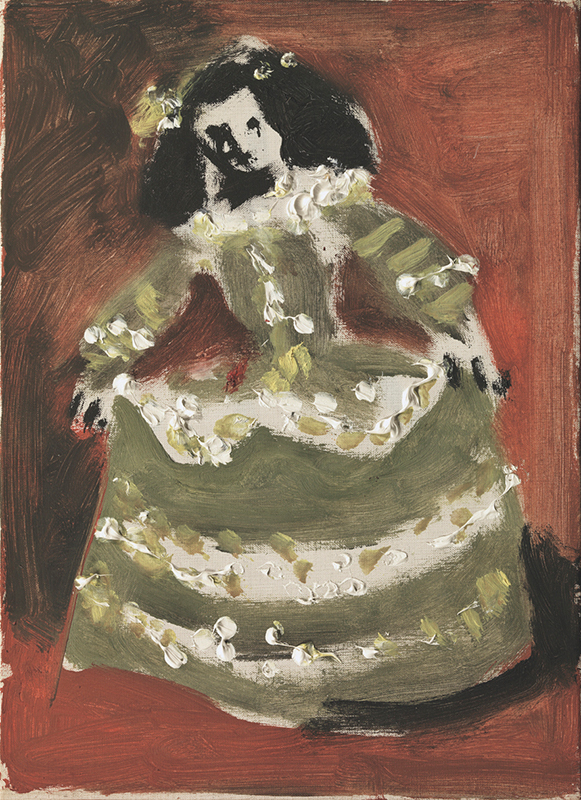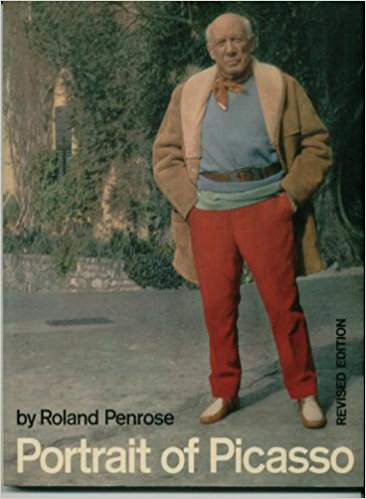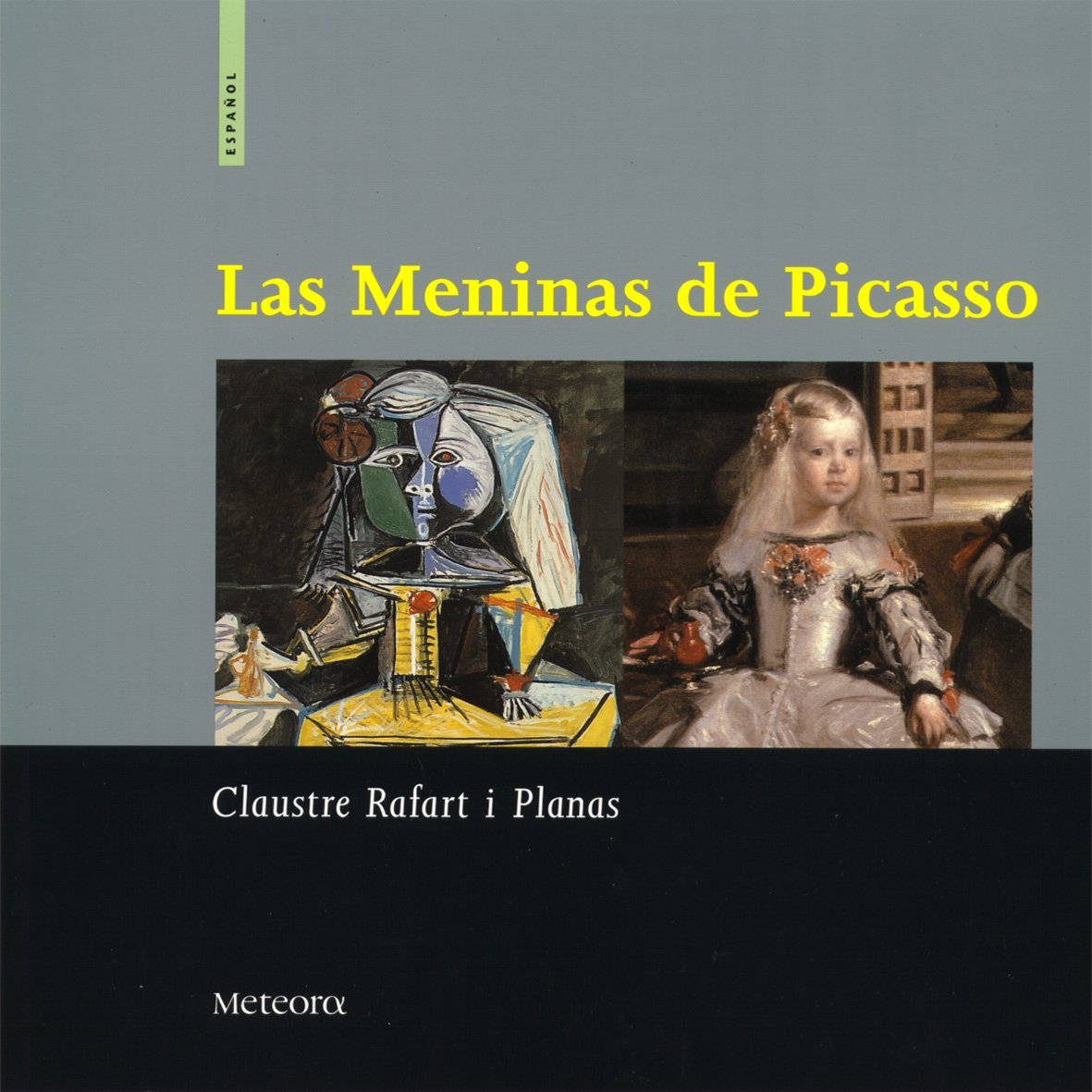Pablo Picasso: The Many Iterations of Las Meninas
"I never do a painting like a work of art. It is always a search. I'm always seeking and there is a logical connection throughout that search. This is why I number them [the works]. I number and date them. Maybe one day someone will thank me for it." —From Museu Picasso website, quoted in Alexander Liberman's article "Picasso" in Vogue, New York, November 1956
Origins: A Masterpiece
On August 16, 1957, Picasso etched out the only existing preparatory sketch for his 6' x 9', black and white Las Meninas masterpiece that he would go on to complete on the following day, August 17. Even more compelling about the final work is its reinterpretation of the 1656 original masterpiece by Diego Velázquez. Such swift execution and masterful translation of the compelling original seems only possible in the hands of genius. And yet, what seems like the inspiration of a day may actually be the work of sixty years.
Ideas that seem to burst forth with inspired ease may have long been incubating in the depths of the mind. Who knows just how long this reinterpretation of Velázquez's original had been in the making. In the case of Picasso's Meninas, we might go as far back as 1897 when, as a sixteen year old on his second trip to El Museo del Prado, he made detail sketches of the original. We may even consider whatever influence watching the 1916 ballet production of Las Meninas might have had some forty years later. After meeting his future first wife, the ballerina Olga Khokhlova, on the set he travelled with the ballet company as they performed in Barcelona in 1917. A masterpiece may indeed be created in a day, but are there such sure lines demarcating the life span of the idea?
Exploration: The Start of a Series
Once such an idea emerges from the mind and is given form it may expand in multitudinous ways. Picasso's first sketch on August 16, 1957 marked the start of a four and a half month exploration of Las Meninas that culminated in a total of 58 paintings. A look at the 58 paintings that comprise Picasso's Meninas series offers us insight into how ideas move about playfully when given free rein. For the artist, when such exploration is tempered by focus the insights can fuel greater curiosity and discoveries.
In the article "The Chronology of Las Meninas of Picasso" featured on the Museu Picasso website, we gain access to the complete series. What is striking is that the most significant work of the series (the black and white August 17 interpretation) was Picasso's first version. As curator Malén Gual notes in her article "The Why and the How of the Presentation of Las Meninas," this means that the subsequent paintings are not "studies" in the traditional sense of preparing detail works for a future final painting but explorations in their own right.
If the masterpiece had been created, why continue? The question may be one that can only be asked in hindsight (and by anyone other than the artist) since Picasso would have had no idea of what would have emerged in his continued exploration. Gual suggests that Picasso's focus on the theme of Velázquez's Meninas was more so an indulgence of the creative process itself. She writes of Picasso's series in "In residence: The studio at La Californie, Dwarf and Adolescent:"
In 1957, he faced Las Meninas and produced a highly detailed study of the rhythm, color, and movement in a constant game of imagination and creative innovation, without losing, however, the fidelity to the atmosphere of the canvas of Velázquez.
This study of rhythm, color, and movement in painting could extend so far as to describe the rhythm, color, and movement of a flourishing creative process.
Development: Variations on a Theme
In being able to view all 58 works of art, one can trace the many iterations of an idea. A look at the transitions from painting to painting reveal not only variations of a subject (Las Meninas) but also reveal slight changes in how Picasso viewed the possibilities. Gray slowly gave way to color; line gave way to multiple geometries; the focus on certain figures widened to include variations of the ensemble and even of their emotional state. As we can see in the works in progress of so many other artists, writers, and scientists, one idea gives way to another.
Meninas, Pigeons, Landscapes, and One Portrait
Of the 58 paintings (the preliminary sketch is not considered part of the series), 45 pertain directly to variations of the Meninas; nine belong to a subseries of pigeons; three are of landscapes; and one is a portrait of Jacqueline, Picasso's second wife. The early paintings of the series seem to relate more closely to its parent in terms of color and style. Below is a sample of paintings from the first three weeks.
His early paintings begin to take on more color until, finally, we see what appears to be an outburst of a new subject in vibrant hues. Over the course of the next three weeks, we see him work his way towards what appears to be a striking detour: a subseries of nine pigeon paintings. At first glance, the pigeons seem to have little to do with the larger series. In a confluence of reality and art, Picasso's view of his pigeon loft from his Cannes studio is reinterpreted via the subject and composition of the painting in which he has so immersed himself. Consider one of the paintings from the pigeon series below. The three white pigeons at the bottom of the painting occupy a similar position as the ladies of both Velázquez and Picasso's original. The structure of the pigeon loft on the left-hand side resembles the geometry of the artist's easel in Picasso's first Meninas. The depth of the ocean background draws the eye into the distance, much in the way the eye is drawn towards the back of the artist's studio in both Meninas. In Picasso's exploration of a theme, he winds through different evocations of the original.
Furthermore, in "The Why and the How of the Presentation of Las Meninas," Malén Gual points to the pigeon series as not only an extension of the Meninas paintings, but also a contributing factor to creative developments in his subsequent Meninas interpretations. In the October 2 Meninas interpretation (presented above, next to the September 12 and 14 image of the pigeons) we can see an example of the shift from his earlier style. There is a vibrancy of color and a certain energy in the brush strokes that mark a turning point. Below one can see a sample of the 27 subsequent Meninas interpretations.
The series does not culminate in a final grand masterpiece as one might have expected, but rather reaches a winding down with the final images. The three landscapes and the portrait of Jacqueline draw the series to a close. The last painting, completed on December 30, shows one of the ladies in a curtsy, seeming to bid the audience—or the series—farewell.
Additional Resources
By far, the richest online resource for information regarding Picasso's Meninas is "El Blog del Museu Picasso de Barcelona." Some of the relevant articles from that site are linked above. Museu Picasso's "Las Meninas (Group)" analysis provides a comprehensive overview of the Picasso's series and its relation to Velázquez's original painting.
Also interesting are two books by friend and biographer to Picasso, Roland Penrose. The first to note, Picasso: His Life and Works, was first published in 1958 and recounts Picasso's "work in progress" (for at the time of Penrose's viewing, only 20 of the 58 paintings had been completed so far). The second, Portrait of Picasso, is filled with photographs and sketches of many paintings (though it does not feature Las Meninas as the book was first published in 1956).
Claustre Rafart i Planas' book, Picasso's Las Meninas, is one of the most comprehensive books available on the topic of Las Meninas. Her analysis of Picasso's series in relation to Velázquez's original helps one to appreciate the nuances of each painting in the series.
*All images are courtesy of the Museu Picasso. For the full citation of paintings, please click here.
*Frontispiece
Pablo Picasso. Las Meninas. Cannes, 18th September, 1957. Oil on canvas. 129 x 161 cm. Gift of Pablo Picasso, 1968. Museu Picasso, Barcelona. MPB 70.463; courtesy of Museu Picasso




